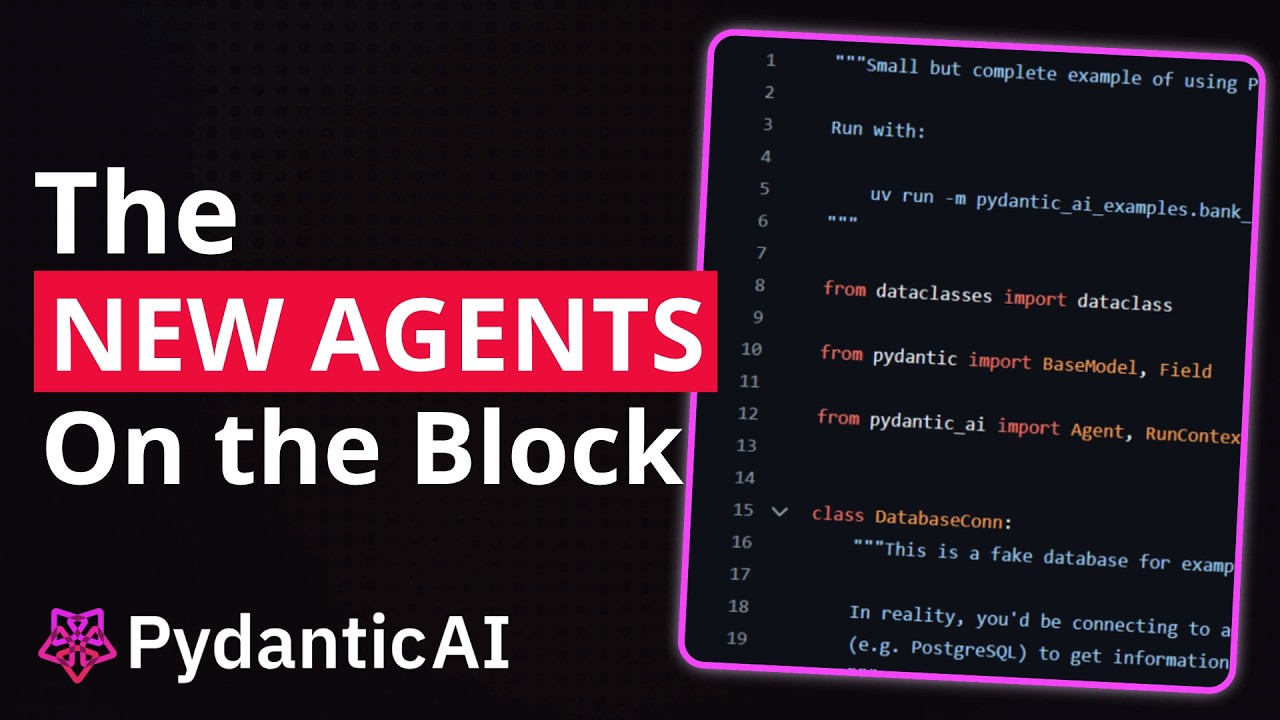The video introduces Pydantic AI, a new agent framework that leverages the Pydantic library for data validation, enabling developers to create versatile LLM applications with structured outputs and model-agnostic capabilities. It highlights the framework’s ease of use, type safety, and dynamic adjustments, making it an attractive option for building efficient agent-based applications in Python.
The video discusses the launch of Pydantic AI, a new agent framework built on the Pydantic library, which is well-known for data validation in Python. Pydantic originally served to ensure that data inputs and outputs conform to defined schemas, particularly in API contexts. As the demand for structured outputs in large language model (LLM) applications grew, developers began integrating Pydantic into various frameworks like LangChain and LlamaIndex. This integration allowed for better validation of LLM outputs, ensuring they could be used programmatically in other applications.
Pydantic AI aims to provide a comprehensive LLM library that leverages the strengths of Pydantic while supporting a wide range of models, including OpenAI, Google Vertex AI, and Grok API models, with plans for Anthropic support in the future. The framework is designed to facilitate various tasks, from chat applications to retrieval-augmented generation (RAG) systems, making it versatile for developers. The team behind Pydantic has transitioned from an open-source library to a company, introducing additional products like Log Fire, an observability platform for tracking inputs and outputs.
One of the key advantages of Pydantic AI is its model-agnostic nature, allowing developers to easily switch between different LLMs. The framework is type-safe by design, which enhances data handling and integration with other tools and databases. Additionally, it simplifies control flow and agent composition using standard Python, making it accessible for developers familiar with the language. This ease of use is particularly beneficial when transitioning from prototypes to production environments.
The video showcases practical examples of using Pydantic AI, including setting up agents, handling structured outputs, and managing chat interactions. The framework allows for dynamic adjustments, such as changing system prompts and injecting tools on the fly, which enhances flexibility during conversations. Developers can also maintain message history easily, enabling more complex interactions without losing context. The structured output feature simplifies data handling, allowing for easy indexing and retrieval of information.
In conclusion, Pydantic AI presents a promising new framework for building LLM applications with a focus on simplicity and Pythonic design. It offers a streamlined approach to integrating various models and managing structured data, making it an attractive option for developers looking to create efficient and effective agent-based applications. The video encourages viewers to explore Pydantic AI and experiment with its capabilities, suggesting that it may require less code than other frameworks while providing robust functionality.
